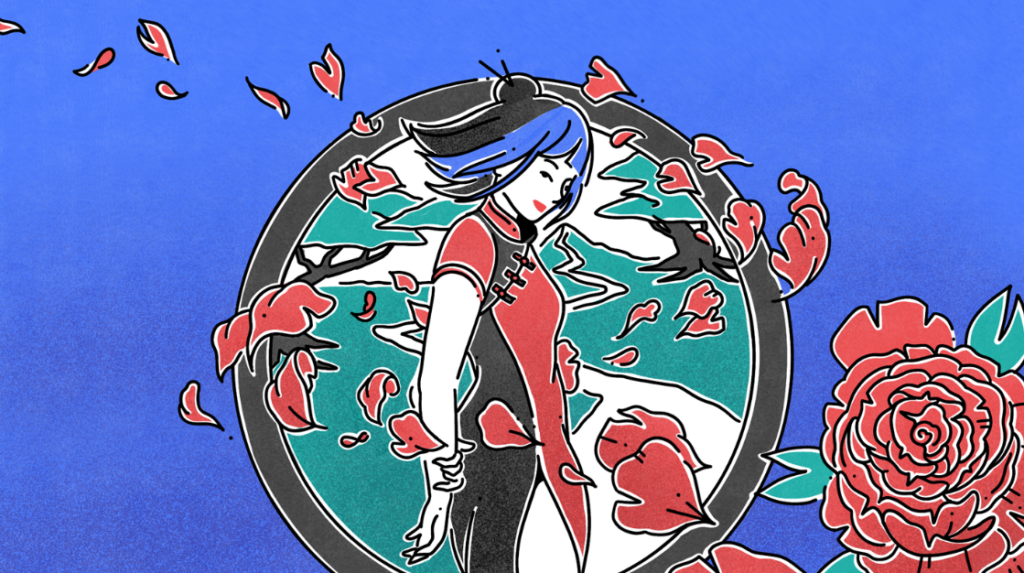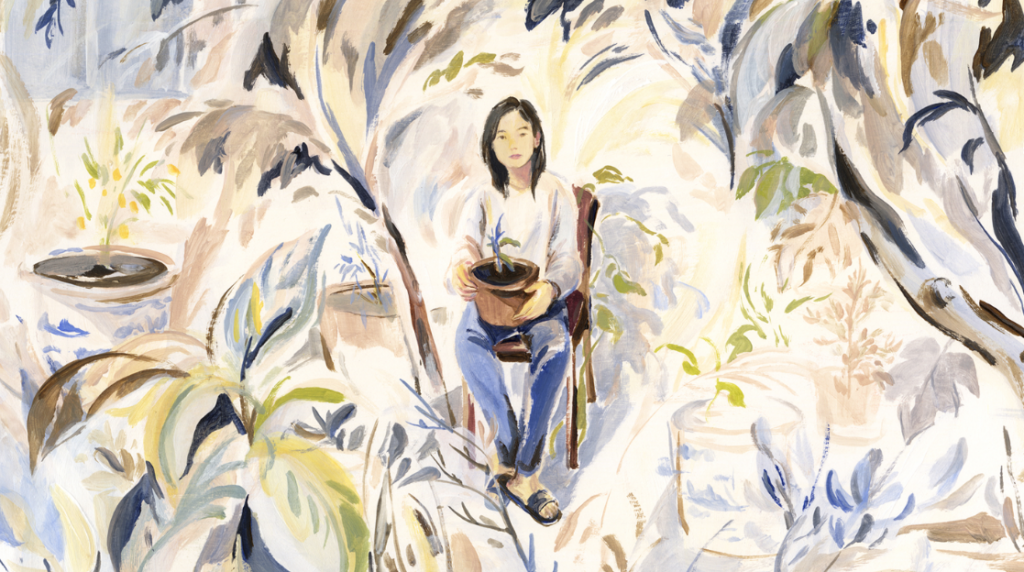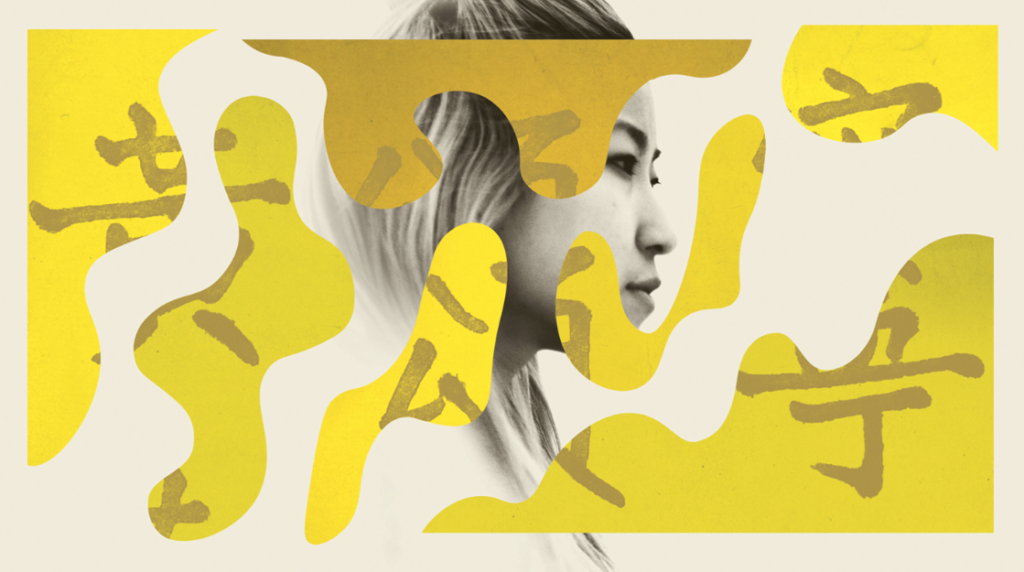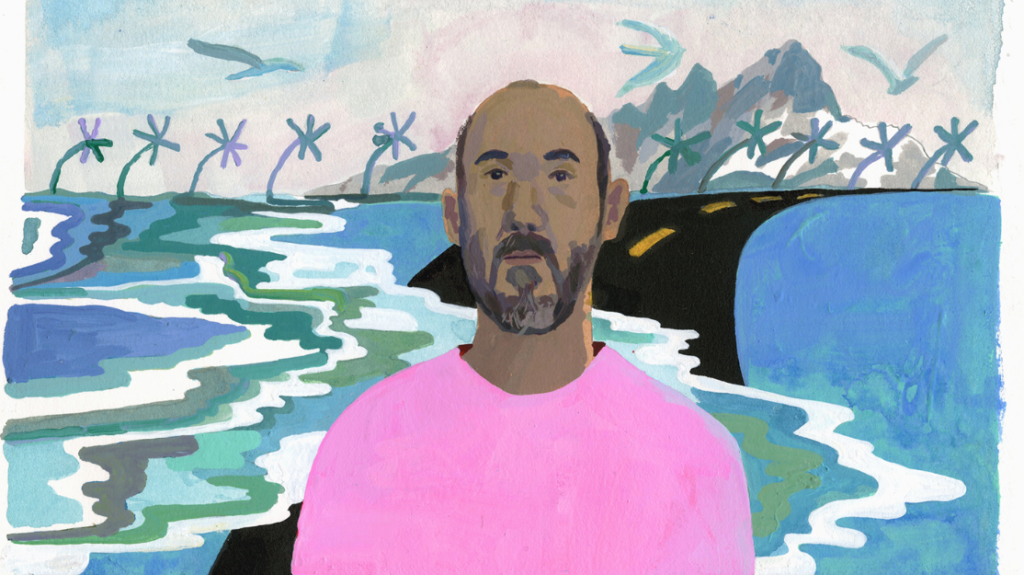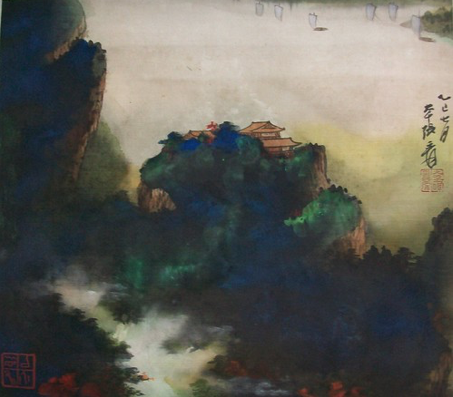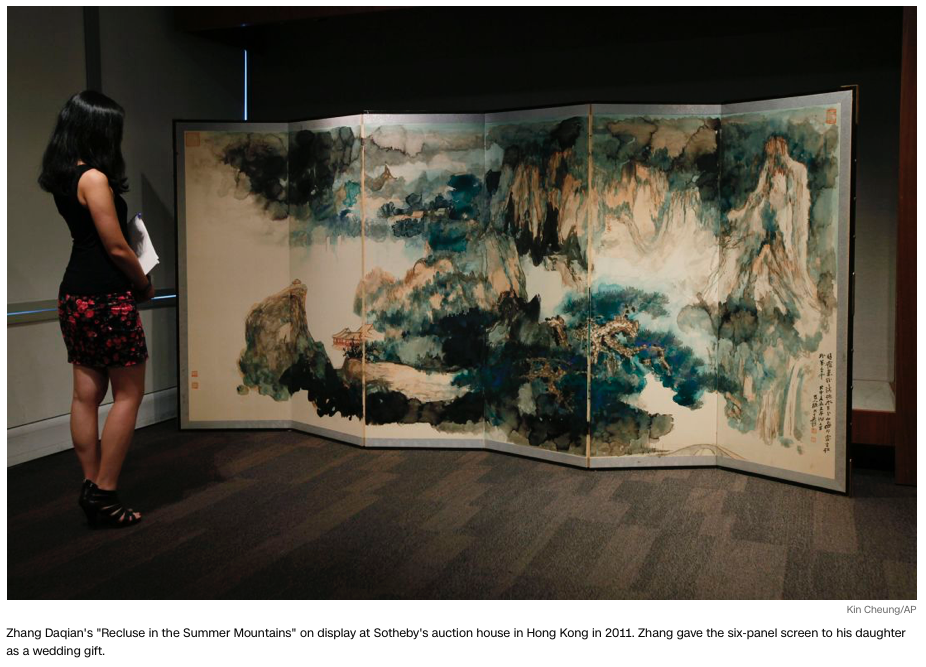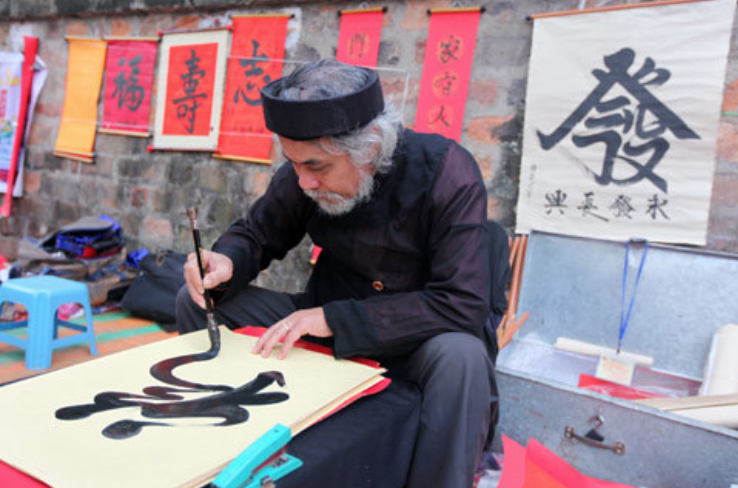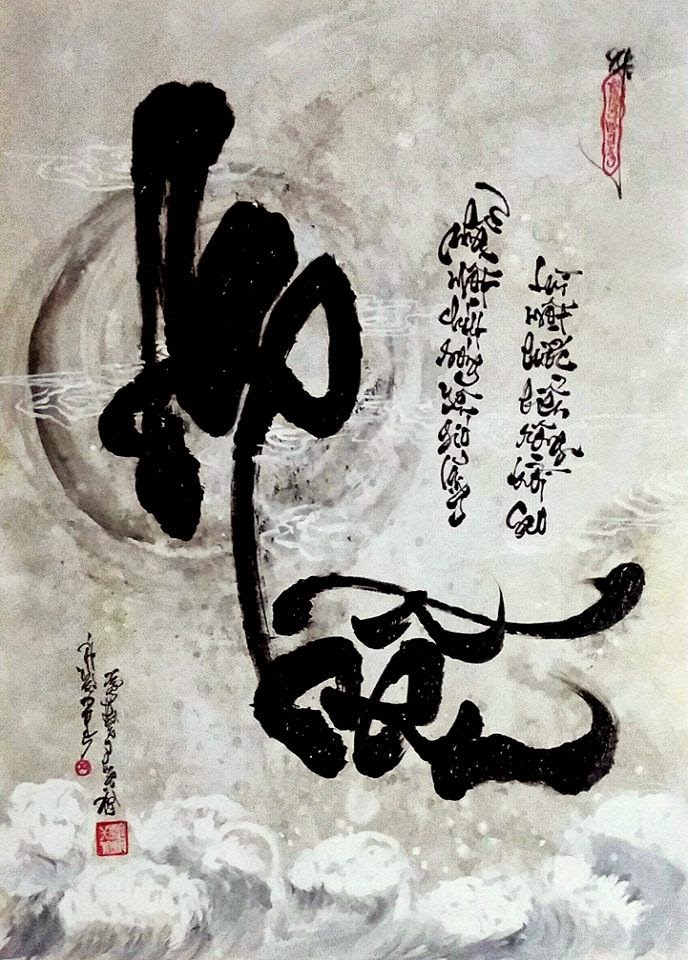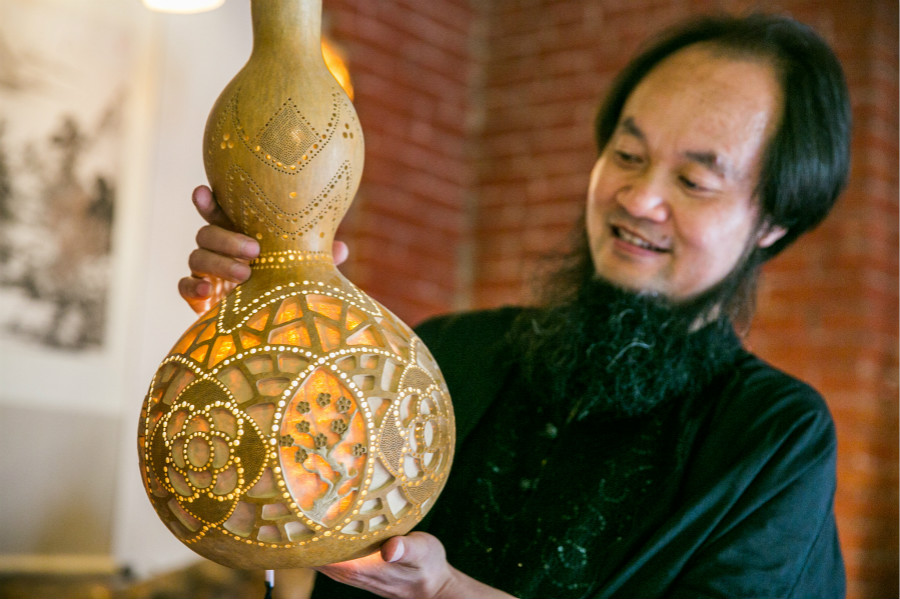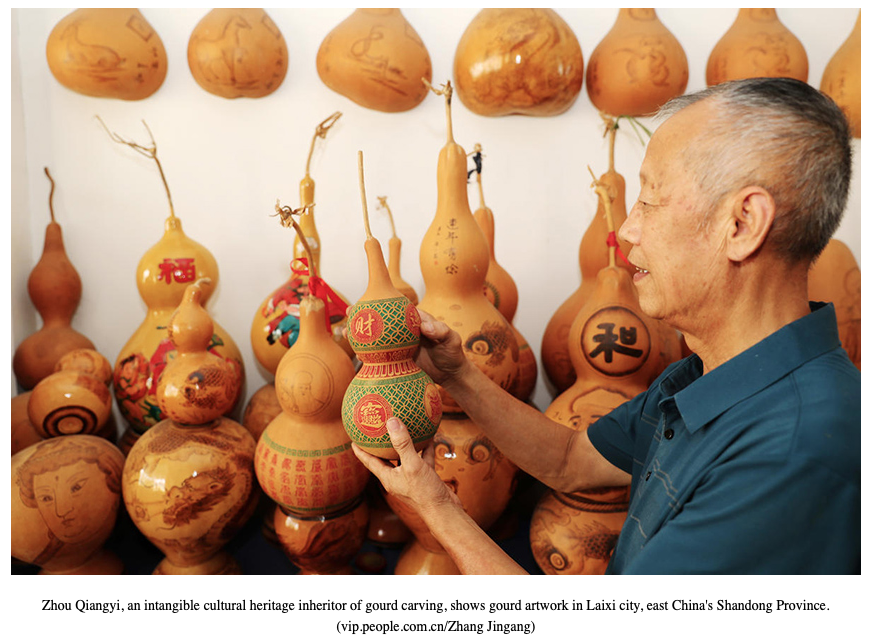Healing can take many forms, through movement, through sound, or through visual expressions; art has been used to speak when words can not. Since the Covid-19 pandemic many Asian Americans have taken up different forms of creative and artistic approaches in combating trauma and fostering healing. In this blog post we will share a few pieces of visual art that paints a picture of hope, healing, and identity.
Nicole Kang Ahn (b. 1988)
Remembrance, 2022
Digital print on Polyvinyl Chloride (PVC)
Remembrance is based on a photo taken by the artist during a visit to the makeshift memorial at Gold Spa in the days following the shooting. It captures a moment of quiet reflection – a young girl and her grandmother lean on each other for support, surrounded by flowers and handwritten dedications. It is a reminder that while our wounds are intergenerational, so too are the ways we show caring and healing.
“I wanted to first remember the victims.”
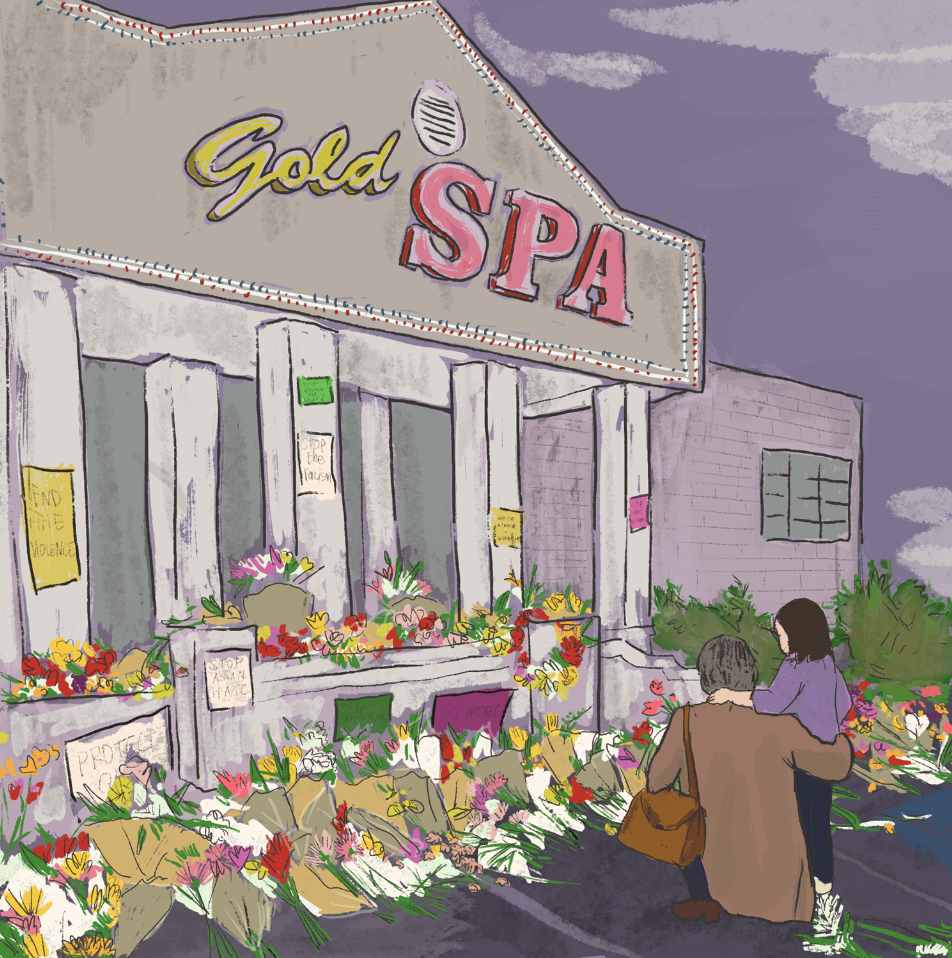
Nicole Kang Ahn (b. 1988) is a painter, illustrator, and muralist from Peachtree Corners, Georgia. Her art means to slow down time and capture mundane moments, savoring each feeling and memory. Her three pieces included in this collection seek to tell a story that remembers the victims, honors their lives, and conveys a message of hope.
Image Description: This artwork is about remembrance. This is an illustration of the Gold Spa store front where an altar of community notes and flowers are sprawled across the front of the spa and an elder with short dark hair, a brown long sleeve shirt, and brown bag is kneeling and embracing a young child with brown shoulder-length hair, wearing a purple long sleeve shirt looking towards the altar. The Gold Spa was the site of one of the shootings that took place on March 16, 2021.
Natalie Bui (b. 1992)
Community Care, 2022
Digital print on Polyvinyl Chloride (PVC)
In Vietnamese, the expression “chia buồn” is used to express condolences. “Chia buồn” literally translates to “divide sadness.” The expression captures the act of dividing grief – of cutting it into small, little, pieces to split among each other so that each of us individually carries a much lighter load. Community Care shows four figures locked in a comforting embrace. Their limbs are entangled and each person leans on the collective, both resting upon and supporting those around them.
Community care requires us to harness our power, privilege, and empathy to uplift the people who are both in and out of the reach of our embrace. In the wake of the anniversary, this piece inspires us to recommit to expanding and deepening our community of care for all, beginning in Atlanta and spreading throughout the country and the world.
“We were talking about a traumatic moment within our movement. But also trying to balance the acts of community care when these moments happen.”
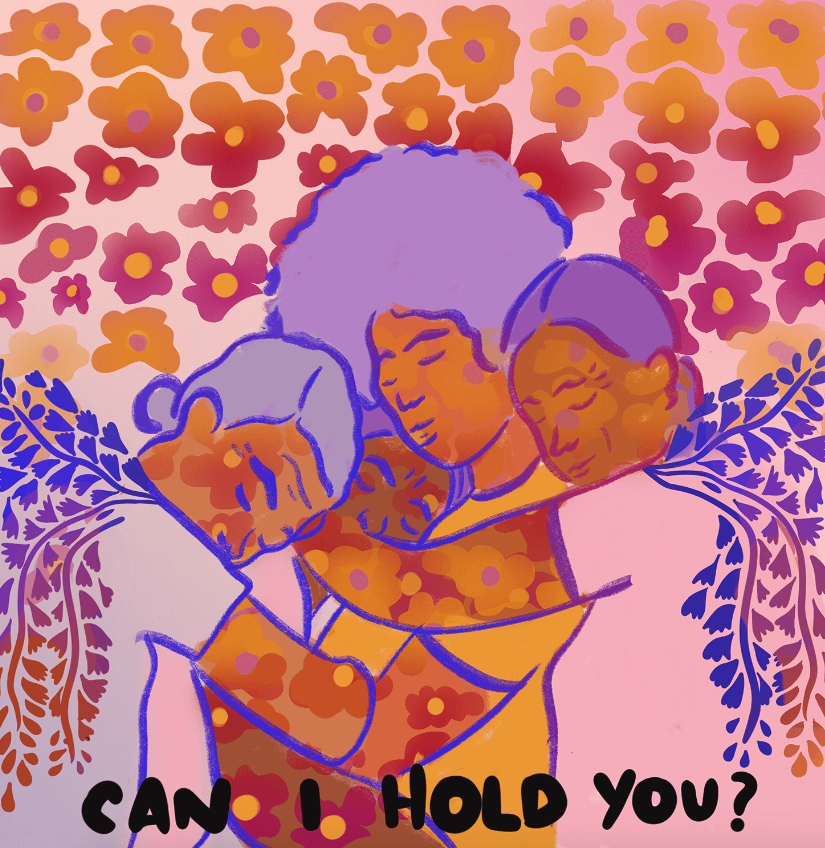
Natalie Bui (b. 1992) is a Vietnamese American digital illustrator and co-Founder of SHIFT – a diversity, equity, and inclusion consultancy. Her work centers on self and community empowerment and emphasizes collective liberation across communities.
Image Description: The theme of this artwork is community care with four women embracing one another and the words “CAN I HOLD YOU?” below the image. The women appear with different hair styles in different shades of purple and different shades of orange, pink and red on their skin. There are shades of purple and blue leaves coming out from behind the two women at the end of each embrace and shades of orange, pink, purple and magenta flowers on the women’s skin. The backdrop of this image shows a gradient of orange and pink flowers.
Nicole Kang Ahn (b. 1988)
Solidarity, 2022
Digital print on Polyvinyl Chloride (PVC)
In this illustration, a diverse group of people of all races, genders, ages, and dis/abilities is featured in the foreground. They are holding boldly colored signs that call attention to a range of social and political issues that are often framed as separate, but are actually deeply intertwined. The shadowed figures behind them gesture to the powerful histories of resistance and community organizing that came before them. As we mark the anniversary of the Atlanta shooting, this piece reminds us that this tragedy is steeped in layers of oppression and interconnected histories of systemic violence. As such, it is a call to action to come together for a more powerful response rooted in love and solidarity.
“Gather together with other people. Align your issues and your values and do something about it.”

Image Description: This image is all about racial solidarity with a diverse group of people of all races, genders, ages, and dis/abilities holding signs that read “YOUR ASIAN WASN’T QUIET; NO MUSLIM BAN EVER; WORKERS RIGHTS ARE HUMAN RIGHTS; I CAN’T BREATHE; THE FUTURE IS NON BINARY; PROTECT OUR ELDERS; HANDS UP DON’T SHOOT; ABOLISH ICE; BLACK LIVES MATTER; Stand Up Speak Up; NOT ONE MORE; Smash the Hierarchy; My body, My choice; BUILD COMMUNITIES NOT CAGES.” The people holding up signs appear centered on the image with shades of purple shadows behind them.
The diversity within the Asian community is vast and covers many languages, beliefs, and traditions. By creating art communities join forces in shared experiences, creating a universal language that goes beyond differences. Art unifies diversity within the Asian communities by sharing narratives, personal expression, and one’s own personal journey. Embracing art as a form of healing gives birth to the celebration of one’s own cultural heritage, diversity, and resilience.
Reference:https://www.advancingjustice-atlanta.org/art-exhibit



